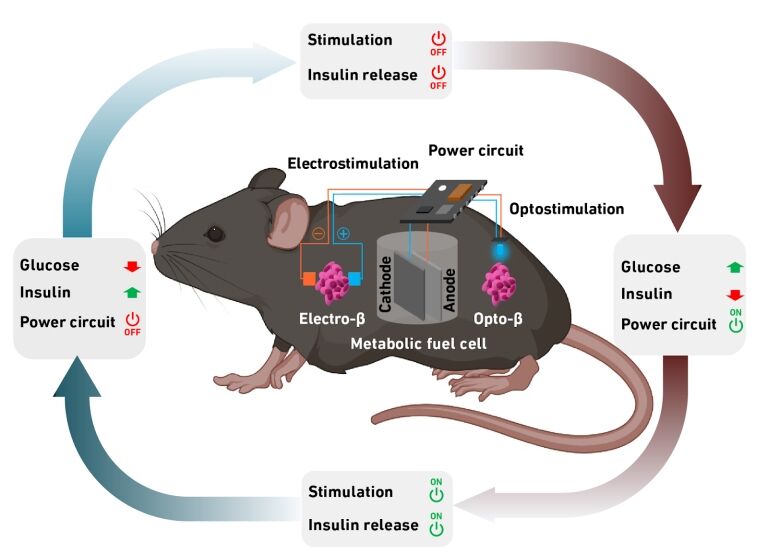ETH Zurich
A team of Swiss researchers has developed a sugar-based implant that automatically produces insulin when blood glucose levels are high.
This would be a less invasive and painful alternative for people suffering from the disease. A diabetes it affects more than 10% of the Portuguese population, and in the last 20 years the number of people with this diagnosis in Portugal has doubled.
Type 1 diabetes patients don’t produce enough insulin—or at all. Insulin is a hormone that converts blood sugar into energy. Without it, blood glucose levels can get too high. This is why diabetics need regular insulin injections.
So, at least once a day, people with type 1 diabetes have to inject themselves, a procedure that can be inconvenient. In addition, they have to regularly monitor their blood sugar levels by pricking their finger to collect a blood sample, which can also be painful.
The implant created by researchers at ETH Zurich is a diabetes management system that releases insulin when levels are high and stops releasing it when they get back to normal, explains the website Freethink.
The implant consists of two parts. The first is a fuel cellcoated by alginate, an algae-based product. Alginate absorbs fluids and allows glucose to enter the cell, where copper-based nanoparticles break it down into gluconic acid and a proton.
Then, the proton triggers an electrical circuit, feeding the second part of the system: a capsule filled with artificial beta cells. These cells were developed in 2016 and, when electrical current is applied to them, they secrete insulin.
ETH Zurich
Scheme of energy generation and insulin control.
In tests carried out with rats with type 1 diabetes, the implant turned out to be a success. The researchers also believe that the system can communicate with a device such as a smartphoneallowing for example a doctor to monitor you.
While the prototype is promising, it’s still just a prototype not tested on humans. It’s unclear how long it would work in the human body or how invasive the process of implanting and removing the device would be.


